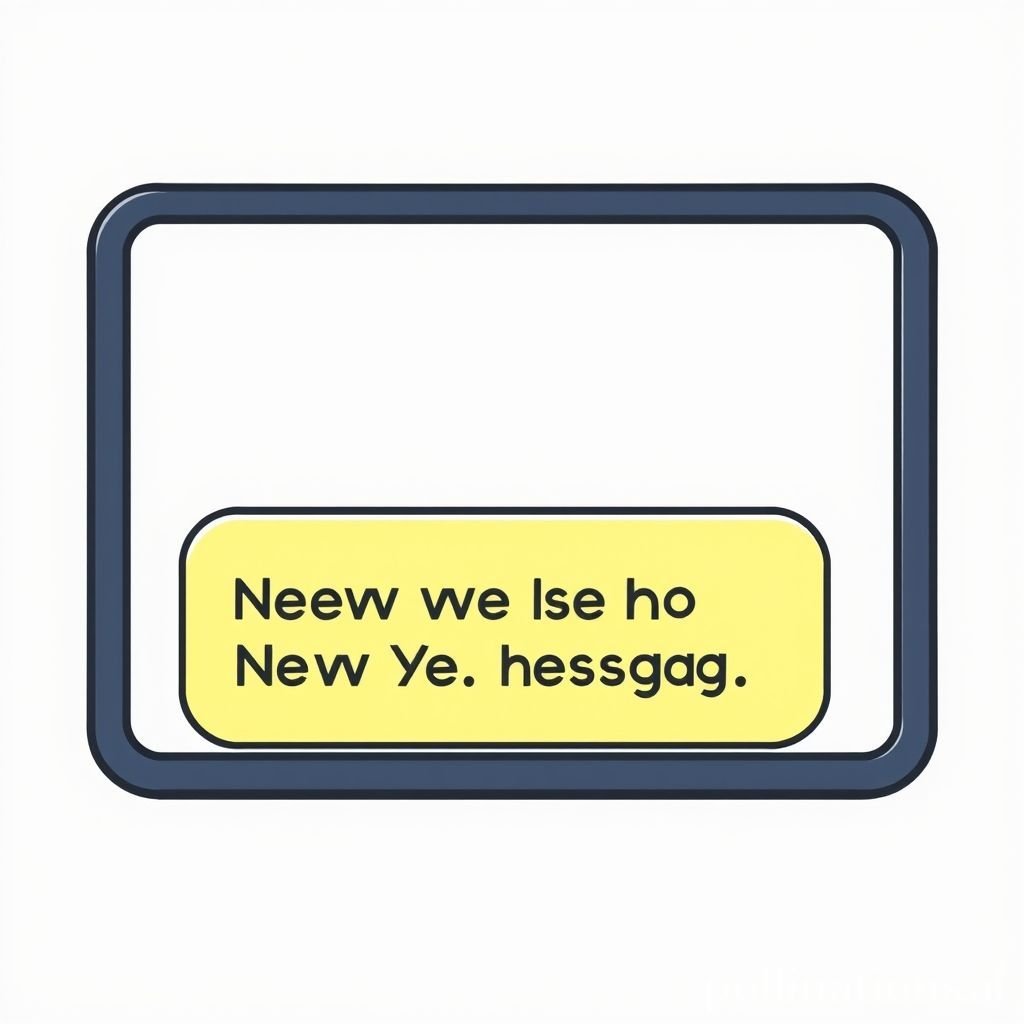Crisp Tap: Elevating UI Experience Through Auditory Feedback
Discover how crisp tap sounds enhance UI feedback. Learn about their role in digital interfaces, from production to creative implementation for better user interaction.
The importance of auditory feedback in modern UI cannot be overstated. A well-crafted crisp tap sound, for instance, significantly enhances the user experience, transforming mundane interactions into engaging ones. These subtle yet impactful user interface sound effects are crucial for providing immediate feedback to users, confirming actions, and guiding them through digital interfaces. From mobile applications to complex interactive systems, the strategic implementation of a crisp click or tap sound reinforces the sense of control and responsiveness, making the digital journey smoother and more intuitive. This article delves into the multifaceted role of crisp tap sounds in elevating the overall UI experience, exploring their applications, technical characteristics, production techniques, and creative deployment in digital design.
Applications in Media
The integration of crisp tap sounds extends far beyond simple button presses in everyday UI. Their utility in media is vast, playing a critical role in shaping audience perception and interaction within various digital platforms. These subtle audio effects provide essential feedback, signaling completion, initiation, or state changes within interactive media. For instance, in educational software, a distinct tap sound can confirm a correct answer, while in gaming, a crisp click can punctuate menu navigation, reinforcing the immersive user interface experience. The versatility of these UI elements allows them to be adapted across numerous formats, improving the overall interactive design.
Industry-Specific Uses
In the realm of digital gaming, crisp tap and click sounds are paramount for a satisfying UI. Every interaction, from selecting items in an inventory to confirming a choice in a dialogue tree, benefits from precise auditory feedback. Beyond gaming, e-commerce platforms utilize these UI sounds to confirm purchases or additions to a cart, adding a layer of professionalism and trust. Financial applications employ them to reassure users that transactions are being processed, providing critical auditory feedback in a secure digital interface. Virtual reality (VR) and augmented reality (AR) environments leverage crisp tap sounds to simulate tangible interaction with intangible digital objects, blurring the lines between the physical and virtual. This enhances immersion, making the user interface feel more reactive and real. The strategic deployment of these sound design elements is a cornerstone of effective interactive design.
Creative Techniques
Beyond their functional role, crisp tap sounds can be manipulated creatively to convey specific moods or brand identities within a UI. Varying the pitch or decay of a tap can differentiate between types of interactions – a soft click for a minor action versus a sharper, more pronounced tap for a critical decision. Layering these audio effects with other ambient sounds or musical cues can further enrich the digital experience. For example, a crisp UI click sound combined with a subtle metallic resonance could evoke a high-tech theme, while a softer, more organic tap might suit a nature-themed user interface. The creative application of these sfx allows designers to imbue their user experience with personality, making the user's journey not just functional, but also emotionally resonant. Related UI sounds can offer further inspiration for designers looking to expand their sonic palette.
Technical Analysis
Understanding the intrinsic properties of a crisp tap sound is fundamental to its effective production and implementation within any UI. These audio effects are typically characterized by their transient nature – a rapid attack followed by a quick decay. Analyzing their waveform and frequency profile provides insights into what makes them so effective as UI feedback elements in the digital realm. This deep dive into the acoustics helps sound designers craft the perfect click or tap for specific user interface needs.
Waveform Characteristics
A crisp tap sound effect typically exhibits a sharp, almost instantaneous attack in its waveform. This means the sound reaches its peak amplitude very quickly. Following this peak, there’s a rapid, often exponential, decay. The initial "punch" of the sound is crucial for immediate feedback, while the swift decay prevents it from lingering and cluttering the auditory landscape of the UI. Visually, this looks like a thin, tall spike on a waveform display. The brevity of the sound is key to its effectiveness in a fast-paced digital UI, ensuring that it provides confirmation without distracting the user. This quick on-off characteristic is what differentiates a "crisp" sound from a lingering "thump" or "buzz."

Frequency Profile
The frequency profile of a crisp tap sound is typically characterized by a significant presence in the mid-to-high frequency range. This range (roughly 2 kHz to 8 kHz) is where the human ear is most sensitive to transient sounds, making these audio effects highly perceptible. A well-designed crisp UI tap will often have a gentle slope in the lower frequencies and a more pronounced presence in the higher frequencies, contributing to its "crisp" quality. Absence of excessive low-end rumble prevents muddiness, ensuring the feedback is clear and precise. Conversely, too much high-end can make the click sound harsh or piercing. The balance of these frequencies is vital for creating a pleasant and effective auditory feedback for the UI, ensuring that the digital interaction feels natural and intuitive. Achieving this balance is a hallmark of professional sound design.
Production Tips
Creating the perfect crisp tap sound for a UI involves careful consideration of recording techniques, editing processes, and the right software tools. The goal is to produce an audio effect that is clean, distinct, and integrates seamlessly into the digital user interface, providing immediate and satisfying feedback. Mastering these production aspects ensures that every click and tap contributes positively to the overall UI experience.
Recording/Editing
To record a crisp tap sound, start with a high-quality microphone – a condenser microphone is often ideal for its sensitivity and accurate transient response. Experiment with various materials for the tap source: a finger on glass, a pen click, a light woodblock, or even a specialized percussion instrument. The recording environment should be as quiet as possible to minimize unwanted ambient noise. Once recorded, meticulous editing is crucial. This involves precise trimming to remove pre-roll and post-decay silence, normalization to optimize loudness, and gentle compression to control dynamics without sacrificing the transient punch. EQ adjustments can further refine the sound, boosting desirable frequencies for crispness and cutting undesirable ones for clarity. The aim is to create a focused, impactful audio effect suitable for user interface feedback.
Software Tools
A wide array of digital audio workstations (DAWs) and specialized plugins can aid in refining crisp tap sounds for UI integration. Software like Ableton Live, Logic Pro X, Pro Tools, or even free alternatives like Audacity, provide the necessary tools for editing, mixing, and mastering these sfx. Specific plugins, such as transient designers, can enhance the initial attack of a tap or click, making it sharper and more pronounced. Equalizers are indispensable for sculpting the frequency profile, ensuring the sound cuts through a mix without being jarring. Reverb and delay plugins should be used sparingly, if at all, for UI sounds, as too much can reduce the desired crispness and immediate feedback. For comprehensive sound design resources, professional libraries like those found on Pro Sound Effects can offer a wealth of expertly crafted UI audio assets, saving valuable production time.
Creative Implementation
Beyond simple playback, the creative implementation of crisp tap sounds can profoundly enhance the depth and responsiveness of a UI. By strategically layering and applying spatial effects, designers can transform standard auditory feedback into a rich, immersive experience, making every click and tap more meaningful within the digital landscape. This thoughtful approach to sound design elevates the user interface beyond mere functionality.
Layering Methods
Layering multiple crisp tap sounds can create a more complex and nuanced audio effect. For instance, combining a sharp, high-frequency click with a subtle, lower-frequency "thump" can give a UI interaction a greater sense of weight or impact. This method is particularly effective for differentiating between various levels of interaction or importance within a digital system. Imagine a standard button tap being a single crisp sfx, while a critical confirmation button incorporates an additional, slightly deeper click layer. This layering can also involve blending tap sounds with subtle metallic, woody, or even synthetic elements to match the aesthetic of the UI design, providing a cohesive auditory experience. The goal is to provide rich, yet unobtrusive, feedback.
Spatial Effects
While often used subtly, spatial effects like panning and subtle reverb can add depth and realism to crisp tap sounds in certain UI contexts, especially in 3D or immersive digital environments. For example, in a virtual reality user interface, a tap sound might originate from the location of the virtual button, moving with the user's perspective. Panning can direct the user's attention, guiding their gaze towards an activated element on a complex dashboard UI. However, caution is advised: excessive reverb can muddy the crispness of the tap and delay the immediate feedback, undermining its primary purpose. The judicious application of these effects ensures that the audio effect enhances the sense of space and interaction without compromising clarity or responsiveness, maintaining the integrity of the UI experience.
Sound Pack Integration
Integrating pre-designed crisp tap sounds from a sound pack offers a streamlined approach to enhancing a UI, ensuring professional quality and consistency across a digital product. These curated collections provide a versatile palette of audio effects designed specifically for user interface applications, making it easier to find the perfect click or tap for any scenario.
Using with Other Sounds
A key benefit of using professional sound packs is the ability to seamlessly combine crisp tap sounds with other related audio effects within the same collection. Tips for combining this UI with other sounds from its pack: Ensure volume levels are balanced to prevent any single sfx from overpowering another. Consider the thematic consistency; for example, if your tap sounds have a metallic quality, pair them with other metallic user interface elements like swooshes or notifications to maintain a cohesive auditory theme. Use subtle crossfades or quick fades to transition between sounds if they are triggered sequentially, ensuring smooth and natural feedback. This approach ensures your digital UI provides a harmonized auditory experience.
Complete Collection
For comprehensive audio solutions and an even wider range of crisp tap sounds, exploring a complete sound pack collection is highly recommended. These collections often contain variations in timbre, intensity, and decay, offering unparalleled flexibility for diverse UI requirements. Get the full sound pack for comprehensive audio solutions that elevate your digital product’s user interface with professional-grade click and tap feedback.
Frequently Asked Questions
Q1: Why are crisp tap sounds important for UI? A1: Crisp tap sounds provide immediate auditory feedback, confirming user actions and making digital interactions feel more responsive and intuitive. They enhance the overall UI experience by adding a layer of satisfaction and clarity.
Q2: What characteristics make a tap sound "crisp"? A2: A crisp tap sound typically has a sharp, quick attack, a rapid decay, and a strong presence in the mid-to-high frequency range, making it distinct and clear as feedback in a digital UI.
Q3: Can crisp tap sounds be used in gaming UI? A3: Absolutely. Crisp click and tap sounds are crucial in gaming UI for menu navigation, item selection, and confirming actions, providing essential feedback that contributes to an immersive and satisfying digital gameplay experience.
Q4: How can I produce my own crisp UI sounds? A4: You can record them using a high-quality microphone and various materials, then edit them using a DAW (Digital Audio Workstation) to refine their waveform and frequency profile. Tools like transient designers and EQs are key to achieving the desired crispness for your user interface.
Q5: Where can I find high-quality sound packs with crisp tap effects? A5: Professional sound effects libraries like Pro Sound Effects or specialized UI sound pack providers offer comprehensive collections of high-quality crisp tap and click audio effects tailored for various digital and user interface applications.



